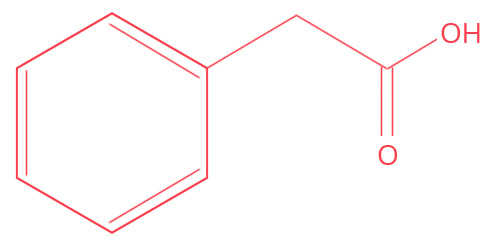Phenylacetic Acid

Phenylacetic acid is an organic compound containing a phenyl functional group and a carboxylic acid functional group. It is a white to off white solid.
Properties of Phenylacetic Acid
- Molecular formula: C8H8O2
- CAS No.: 103-82-2
- The molecular weight of Phenylacetic Acid is 136.15 g/mol.
- The melting point of Phenylacetic Acid is 76°-78°C
- White crystalline solid
- Assay: Not Less Than 99% By G.C
Applications of Phenylacetic Acid
- Phenylacetic acid is an excellent fixative agent and it can be directly used in soap, as a cosmetics essences
- Phenylacetic Acid is used in perfumes
- It is used in the production of several pharmaceuticals.
- This compound is used to treat urea cycle disorder.
